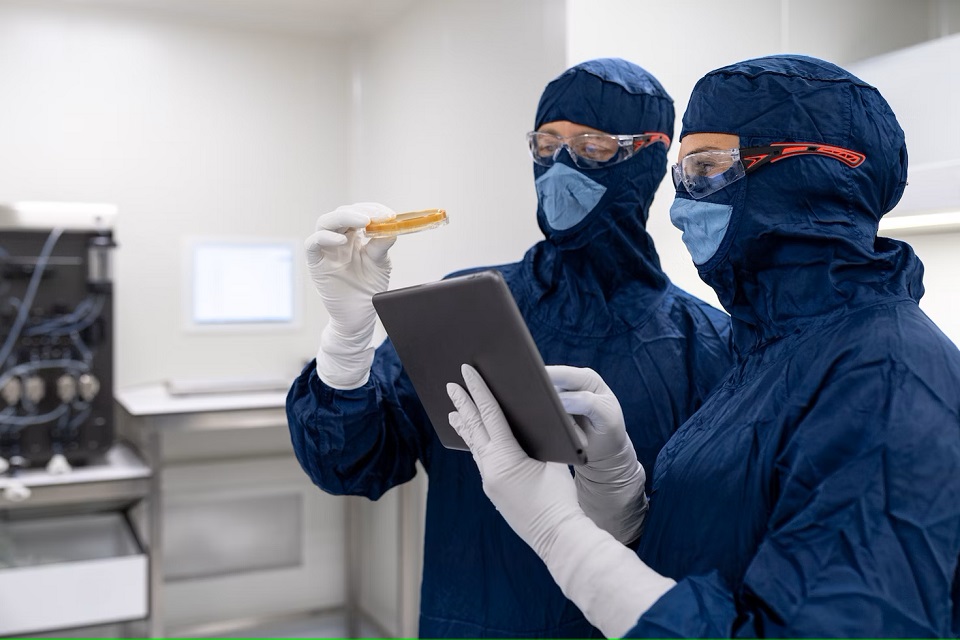In the world of high-tech manufacturing, precision is critical and even the tiniest of particles can ruin sensitive processes. In such cases, achieving microscopic cleanliness is not just a goal, it’s a necessity.
Microscopic cleanliness is essential in any business that requires ultra-clean surroundings, whether it’s semiconductor manufacture or pharmaceuticals. In this article, we’ll discuss the strategies that can help you attain and maintain the conditions required for high-tech manufacturing.
Table of Contents
Understanding The Cleanroom Environment
To achieve microscopic cleanliness in high-tech manufacturing, one must first understand the cleanroom environment and its critical role. Cleanrooms are classified based on ISO standards. These range from ISO Class 1 (fewest allowable particles) to ISO Class 9 (most particles allowed). For high-tech applications, ISO Class 1 to ISO Class 5 is typical.
Each class has stringent limits for particles of varying sizes, measured in micrometers (µm). For example, ISO Class 1 allows a maximum of 10 particles per cubic foot of air that are 0.1 µm or larger. Such understanding provides the foundation for establishing and maintaining cleanliness standards.
Designing Cleanroom Facilities
The physical design of a cleanroom facility is pivotal in maintaining microscopic cleanliness. The airflow, heating, ventilation, and air conditioning (HVAC) systems, as well as room layout, are all critical considerations.
According to Fortune Business Insights, the cleanroom HVAC market was estimated to be worth USD 50.16 billion last year. Its value is expected to rise from USD 52.83 billion in 2023 to USD 82.10 billion by 2030. The market is predicted to increase at an annualized rate of 6.5%.
Cleanroom layouts should minimize the potential for contamination, ensuring that personnel and equipment flow in ways that prevent cross-contamination. The choice of construction materials, including wall and flooring materials, must be compatible with cleanliness requirements and easy to clean.
Contamination Control Protocols
Achieving microscopic cleanliness relies heavily on rigorous contamination control protocols. According to Bioprocess Online, humans are responsible for 80 to 90% of the typical microbial flora found in a cleanroom.
Personnel working in cleanrooms must adhere to strict gowning procedures, including donning cleanroom suits, hoods, gloves, and shoe covers. These measures help prevent human-generated contaminants, such as skin flakes and hair, from entering the environment.
Personnel training is crucial to ensure awareness of cleanliness guidelines and adherence to standard operating procedures. Properly trained staff are less likely to introduce contaminants and are more capable of identifying and addressing potential issues promptly.
Advanced Filtration Techniques
Filtration is a cornerstone of contamination control in cleanrooms. High-efficiency particulate air (HEPA) and ultra-low penetration air (ULPA) filters are essential components. According to the EPA, HEPA filters have a 99.97% effectiveness in capturing particles as tiny as 0.3 µm. ULPA filters are even more effective, capturing particles as small as 0.12 µm with a similar efficiency.
Regular filter replacement and upkeep are essential for ensuring that filtration systems function properly. Dirty or clogged filters can compromise cleanliness, so monitoring filter conditions and adhering to a strict maintenance schedule are essential.
Monitoring & Testing
Monitoring and testing are vital aspects of achieving and maintaining microscopic cleanliness. Real-time monitoring using particle counters and environmental sensors helps ensure that cleanliness standards are consistently met. According to American Cleanroom Systems, these instruments continuously measure airborne particle levels and alert personnel to any deviations.
The cleanroom particle counter is a particularly crucial tool in the monitoring and testing process. Its main purpose is to give real-time data on the size and concentration distribution of airborne contaminants in the cleanroom. Cleanroom particle counters produce reports that are essential for regulatory compliance. This helps in ensuring that cleanliness requirements are met.
Viable air sampling is another critical tool for assessing cleanliness. It involves collecting samples of microorganisms in the air to ensure that microbial contamination is within acceptable limits. Data from these monitoring and testing activities provide valuable insights into the cleanliness of the cleanroom environment.
Cleanroom Maintenance & Upkeep
Effective cleanroom maintenance and upkeep are essential to preserving the pristine conditions required for high-tech manufacturing. Regular cleaning procedures, including wiping down surfaces, vacuuming, and disinfecting, must be part of a routine maintenance schedule.
Preventive maintenance for HVAC systems, filters, and other critical equipment is necessary to avoid unexpected breakdowns that could compromise cleanliness. Any issues or deviations from cleanliness standards should be addressed promptly to minimize contamination risks and maintain a sterile environment.
Final Thoughts
Achieving and maintaining microscopic cleanliness in high-tech manufacturing is a multifaceted endeavor that demands meticulous attention to detail. Understanding cleanroom classifications, carefully controlling contaminants, implementing strict protocols, and continuous monitoring are all vital components of this process.
The ever-growing need for precision and purity in industries like semiconductor manufacturing underscores the critical need for investing in cleanrooms. These investments are crucial for businesses aiming to consistently meet the most stringent standards of quality and reliability.



